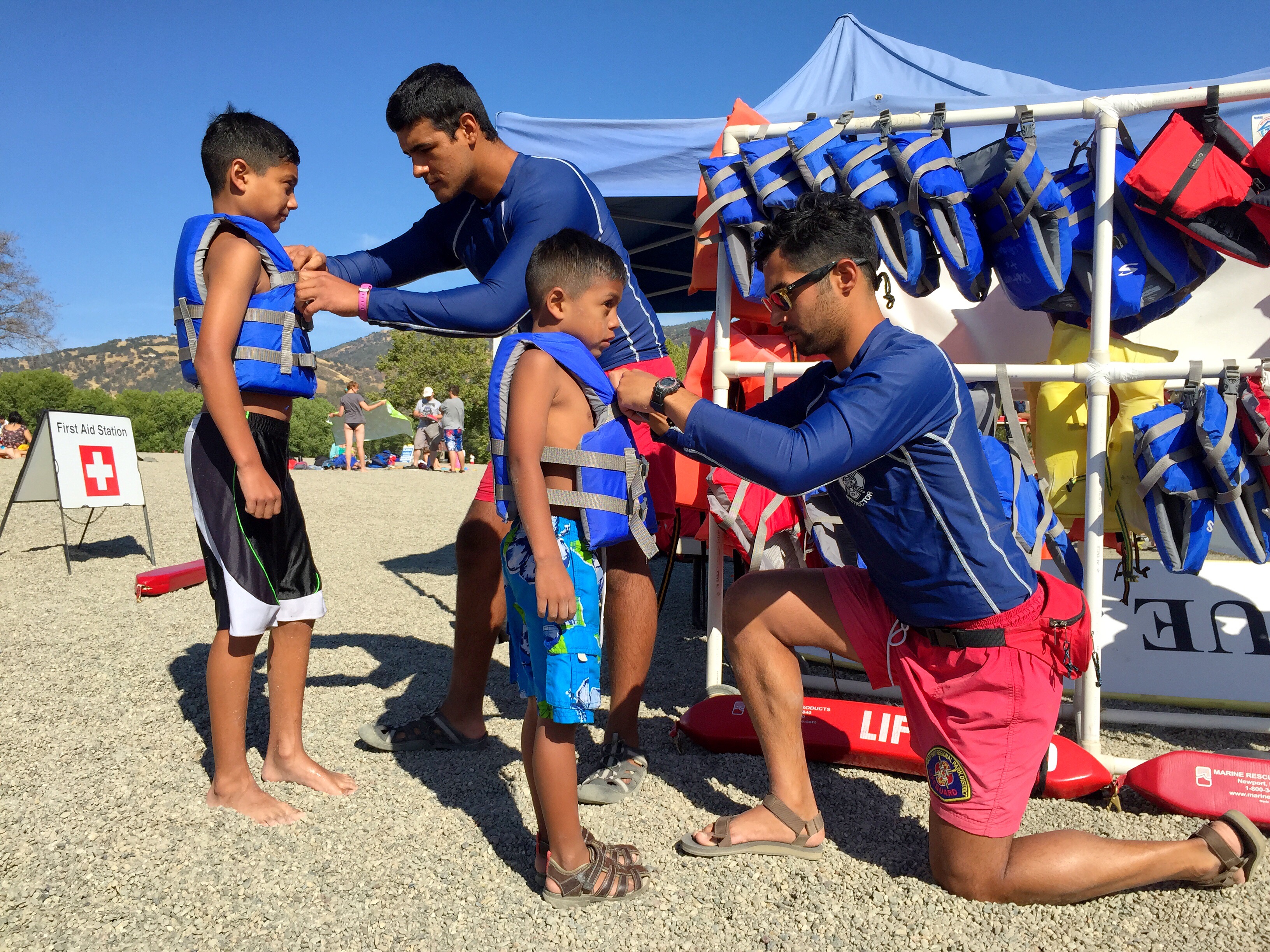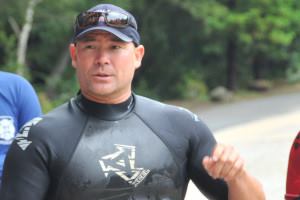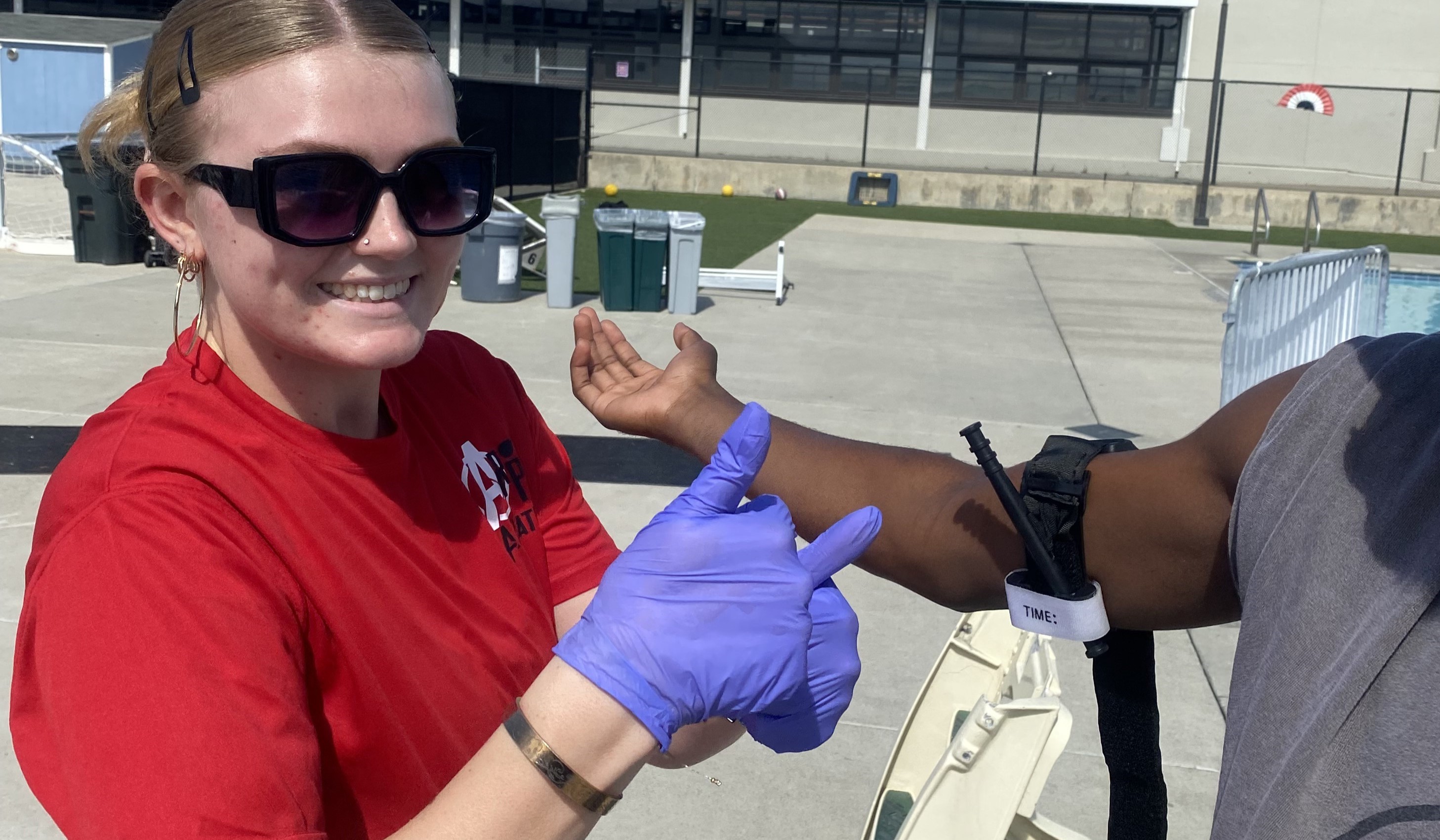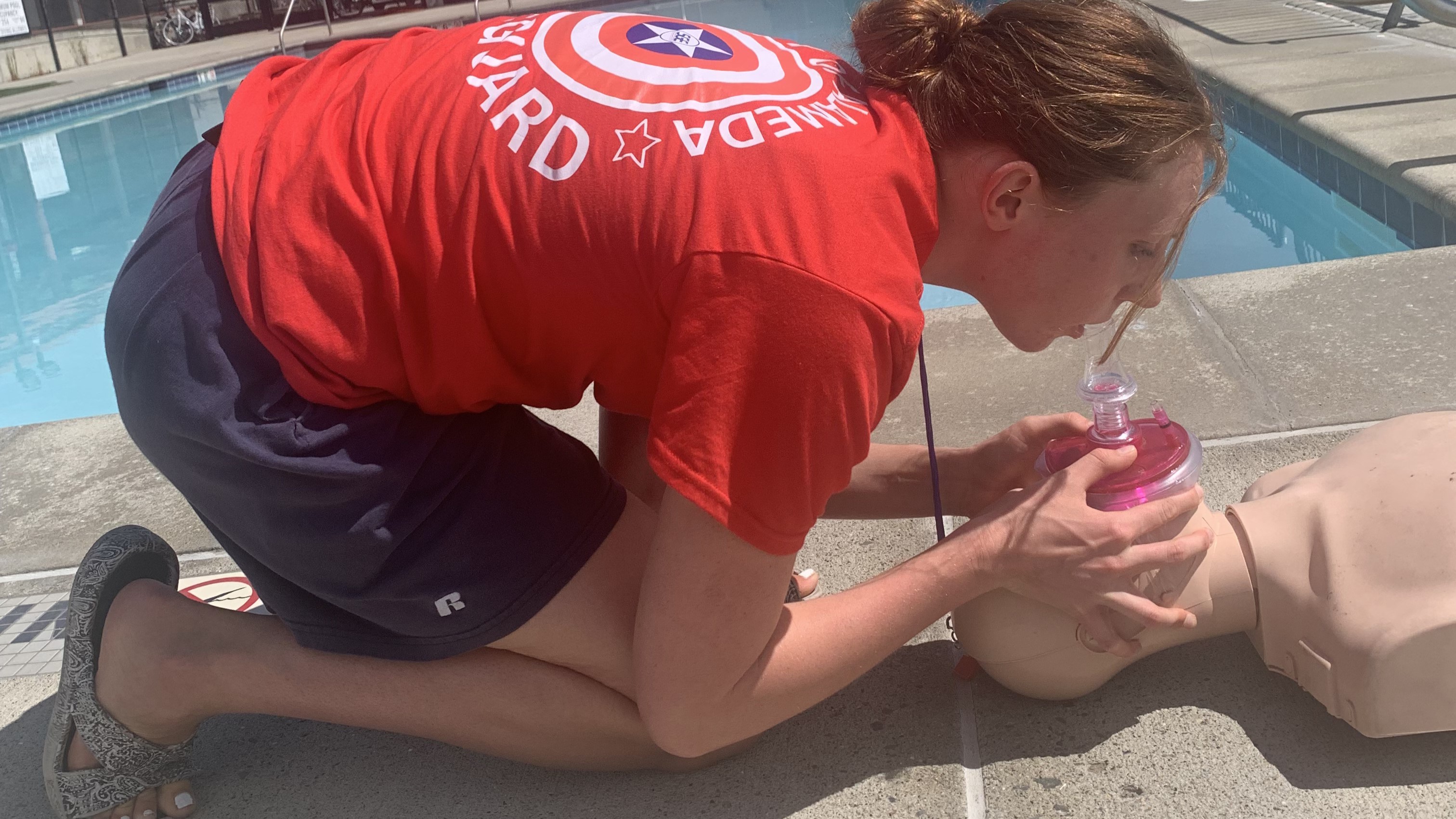Rescues are flashy but prevention makes up the majority of what we do — keeping the crisis or emergency from happening. As a public servant, I know this is one of the best ways my lifeguarding benefits the community — making sure patrons go home safe and unharmed everyday.
There are many ways aquatic professionals and their agencies implement drowning prevention. Some advocate swim lessons. Some provide classroom presentations. Some use drowning prevention mascots. All are valuable, and all are important.
Let’s talk about three: swim tests with wrist banding, child supervision enforcement, and life jacket loaner programs.
Swim Tests
Swim tests have been around for a long time.
I remember the first one I participated in: It was my third-grade, end-of-the-year school field trip to our local swim lagoon. It had an artificial beach with real sand and dark water, just like a lake, and a dock with a slide and diving board. Swim tests were administered upon arrival.
I remember the lifeguard told me to swim from pole-to-pole, the poles being about 25-yards apart. I had to use the crawl stroke, and I could not stop or stand up until I made it to the far pole. Otherwise I would fail the and not be allowed a second attempt. If I were successful, my reward would be the opportunity to swim to the dock and use the slide and diving board. Three of my classmates failed ahead of me. Then I took the test. I passed, and the whole class cheered. It was the first time I received accolades from my peers. I was one of only three who passed.
Ten years later, I would serve as a lifeguard at this same lagoon administering the swim tests. Another 20 years later, that swim lagoon would be one of the five facilities that I would supervise. Now 44 years later, as the aquatic manager, I oversee all 12 aquatic facilities of the East Bay Regional Park District. So I’ve had plenty of time to improve our swim test. In 2019, my lifeguards administered more than 41,000 swim tests.
The swim test is offered at all sites that have deep water. If a patron, adult or child, wants to swim in water more than chest-deep, it is mandatory. Swim tests are offered the entire time lifeguards are on duty. They can be done in crawl stroke or breaststroke. Upon successful completion of the test, the patron receives a wrist band for easy identification. Visitors are required to pass the test each day they want to swim in deep water — wrist bands from prior days don’t count.
Child Supervision
Consistent enforcement of child supervision is necessary for drowning prevention.
However, the definition of child supervision likely varies depending on whom you ask. Some believe the parent can multitask as long they can hear or see the child. To others, it suffices to have a slightly older sibling assist. This type of supervision may be common within a household, however, it doesn’t work in an aquatics environment.
Child supervision in and near the water means active supervision by the parent, who stays within arms reach of the child. No distractions, period. The age limit of the child and guardian varies from agency to agency.
But child supervision goes beyond just the parent: Day camp counselors, teachers and field trip parent volunteers all must do their part.
On busy days when the crowd swells at our facilities, we add a secondary position to the rotation, the Child Supervision Lifeguard (CSL), designated to enforce and educate adults on child supervision. For our waterfront beaches, the CSL walks the shoreline and as deep as the shallow water rope, looking for unsupervised children. When the lifeguard identifies a potential unsupervised child, they ask where their parent is. If the child doesn’t know, or it is clear that the parent is far away, the lifeguard requests a backup lifeguard to take their place in the rotation. Once the CSL has coverage, they take the child to the parents and educate them on our Child Supervision rule. We strongly encourage and promote recreational swimming with both child and parent in the water.
Life Jacket Loaner Programs
Life jacket loaner programs provide an additional layer of protection against drowning.
Lending life jackets is a great equalizer, providing children and adults access to recreational aquatics activities, especially if some have concerns about their comfort level in and around the water. Loaner programs help normalize the idea that it’s okay to wear a life jacket. Our agency has a life jacket loaner station at all lifeguarded facilities. Family members sign a form, and lifeguards assist in the sizing and donning of the jacket. Recipients can use the life jacket all day or bring it back after a short use. There is no limit to how many times someone can check out a life jacket. We’ve seen a lot of success with our program, lending almost 30,000 life jackets in 2019.
If your agency wants to incorporate a similar program, several associations and non-profits are ready to assist with the acquisition of life jackets through grants. These include the Aquatic Safety Group’s Note and Float Life Jacket Fund, and the Association of Aquatic Professionals’ Life Jacket Safety and Learn-to-Swim Grant.
Success in gaining the grants requires knowing the application deadlines. If you miss a deadline, consider reaching out to a state, county, local or corporate foundation with your request. Lastly, review the grants rules, expectations and performance measures. Some require data collection.
Another resource, the National Drowning Prevention Alliance, has a web page listing resources to develop, implement and manage life jacket loaner stations. Learn more about the value of making life jackets available, and watch a video presentation by Elizabeth Bennett and Dr. Linda Quan from Seattle’s Children Hospital.
It is important that we train, train often, and train on prevention just as much as we would on rescue. Drowning prevention is one of the pillars of service that aquatics professionals provide their communities.
Stay safe and train hard.



